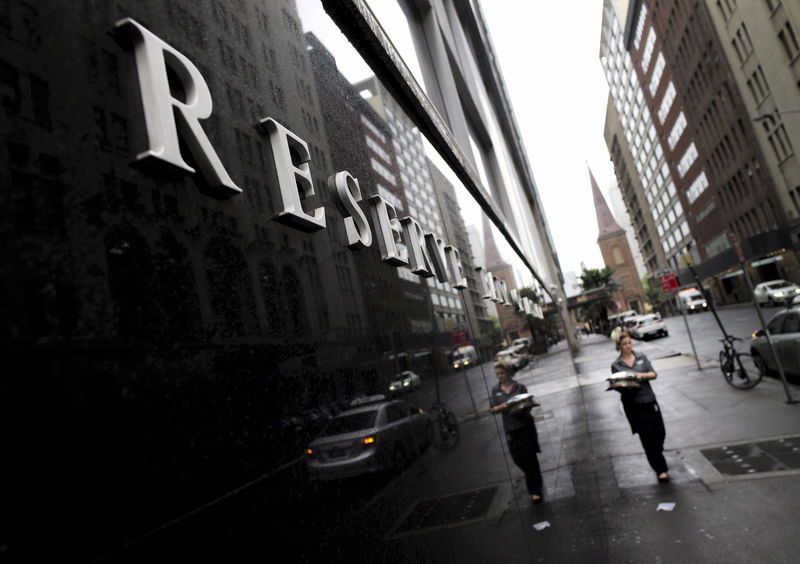By Wayne Cole
SYDNEY (Reuters) - Australia's central bank cut interest rates to an all-time low of 1.75 percent on Tuesday, the first easing in a year as it seeks to restrain a rising currency and stave off the creeping curse of deflation.
The Reserve Bank of Australia's (RBA) quarter-point cut sent the local dollar down more than one U.S. cent to $0.7567 as markets wagered a further move to 1.5 percent was now likely.
Australia is just the latest in the Asian region to feel the chill of deflation as too many goods chase too little demand. Singapore surprised many by easing last month, and it followed India, Taiwan, Indonesia, China, Japan and New Zealand.
Speculation of a possible cut flared last week when Australian government data showed inflation had slowed far more than expected in the first quarter of the year.
Underlying inflation dropped to a record low of 1.5 percent, taking it well under the RBA's long term target band of 2 percent to 3 percent and effectively pushing real rates higher.
"Inflation has been quite low for some time and recent data were unexpectedly low," RBA Governor Glenn Stevens said in a brief statement after the bank's May policy meeting.
"These results, together with ongoing very subdued growth in labor costs and very low cost pressures elsewhere in the world, point to a lower outlook for inflation than previously forecast."
Eight central banks globally have embarked on entirely new stimulus cycles so far this year while the Bank of Japan and European Central Bank have embraced sub-zero rates and expanded their asset-buying campaigns.
All this easing abroad has in turn boosted the Australian dollar further than the RBA desired, hurting exports and tourism while pushing down import prices and, hence, inflation.
UNLIKELY TO BE "ONE AND DONE"
All of which argued for at least one cut in rates to offset these tighter financial conditions, and markets were quick to price in the possibility of a further move <0#YIB:>.
"It's hard to see how one cut by itself is going to do much," said Commonwealth Bank Chief Economist Michael Blythe.
"So you'd have to think the odds on a follow-up have also increased, very much tied in with how the inflation outlook evolves from here. August would be the most obvious timing."
The easing comes just hours before the conservative government of Prime Minister Malcolm Turnbull reveals a budget that is considered crucial for his chances in a likely July election.
Normally a rate cut and lower mortgage rates would be considered a political positive in Australia. Yet this cut could also raise an awkward question - if the economy was doing as well as Turnbull claimed, why would it need lower rates?
While Australia is still struggling with the unwinding of a massive mining boom, economic activity has been generally favorable. Growth was a surprisingly brisk 3 percent for 2015 and unemployment recently fell to a 30-month low of 5.7 percent.
The RBA had also been reluctant to risk a debt-fueled bubble in the housing market, though tightened rules on investment lending has seen prices cool in recent months.
"At present, the potential risks of lower interest rates in this area are less than they were a year ago," Stevens said on Tuesday, providing another reason to expect further cuts.
National Australia Bank (AX:NAB) and Westpac Banking Corp (AX:WBC) were quick to pass on the full quarter point cut to home borrowers, which could provide a new lease on life into house building and employment.

Banking stocks also took off on the prospect of increased demand for mortgages, lifting the benchmark share index (AXJO) 2.1 percent for its biggest daily rise in three months.